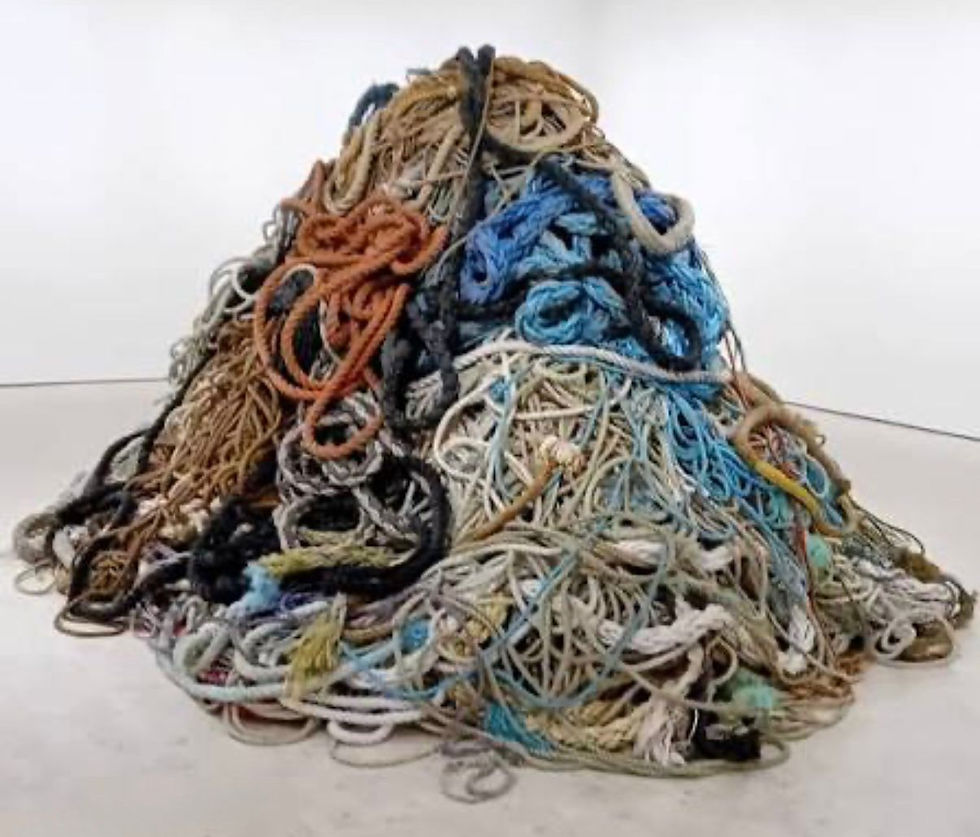How Tyres are Killing Salmon and Polluting Our Oceans
- Daniel Grove
- Nov 19, 2022
- 4 min read
Updated: Dec 24, 2023
Tyres are the second largest source of ocean microplastics, and new research has identified them as the source of a lethal toxin that’s killing salmon.

Plastic pollution has become one of the biggest environmental challenges that we currently face, and with global plastic production now exceeding 380 million tonnes per year, that comes as little surprise. From whales and seabirds choking on a bellyful of plastic bags, to microplastics reaching the top of Mount Everest, plastic waste has become a global crisis. We’ve replaced single-use plastic bags with reusable ones, we’ve swapped plastic in consumer products for more sustainable materials, introduced taxes on plastic packaging, and scientists are working hard to develop biodegradable plastics for food packaging. But what about tyres?
30% of Ocean Microplastics Come From Tyres

The average tyre loses 4kg in wear particles over its lifetime, and IUCN estimates that approximately 30% of the microplastics circulating in our oceans come from tyre wear particles (TWP). Most of those particles are carried to the ocean by the wind, and are so small and light that they can remain airborne for as long as a month, travelling huge distances. The rest are washed into waterways from roads, where they gradually make their way to the ocean, but researchers at Washington State University recently found that tyre wear particles aren’t just a microplastics problem – they are also the answer to an ecological crisis that has been puzzling researchers, conservationists and Native American tribes for decades.
Tyre Pollution is Killing Salmon

During the 1990’s, conservationists began a major undertaking – ecological restoration of streams in the Pacific Northwest of America. Their hope was to restore degraded habitats and, in particular, to aid the recovery of salmon as they return from the ocean to spawn in freshwater streams. Salmon form a vital part of the delicate ecological balance of food chains wherever they occur, but their numbers have plummeted over the years in many ecosystems. For Native American communities, this has been a nutritional and cultural disaster. Salmon are at the core of many Native American cultures, and it used to be said that some years, the rivers in the Pacific Northwest were so full of salmon, that the Nisqually people could cross the rivers by walking on the salmons’ backs. Now, their fisheries that provided income and a valuable source of protein, have collapsed, and salmon runs are less than 1% of their pre-colonial levels.
The hope was that once the habitats were restored, the salmon would return, and in that regard, the work was successful. But then something happened that no-one had anticipated. The returning salmon began to die in huge droves after heavy rains. Coho salmon were spotted rolling and gasping at the surface of the water shortly before dying – a phenomenon that became known as 'USRMS' – urban stormwater runoff mortality syndrome. In some seasons, as many as 90% of the salmon run died before getting the chance to spawn, and it’s taken 30 years to identify the cause: Tyres.
6PPD-quinone: the Toxic By-product of Tyre Wear

Using a mix of high-resolution mass spectrometry and nuclear magnetic resonance imaging to identify the components of the chemical soup that is formed when stormwater runs off roads, researchers at Washington State University finally identified the guilty chemical. 6PPD is a chemical compound used in tyre manufacturing across the world, to reduce oxidation and ozonation of tyres. In other words, it reacts with gases in our atmosphere to stop tyres from cracking, thus prolonging the life of tyres. Like most commercial chemicals, 6PPD is subject to safety testing, and it proved to be environmentally safe for use in tyres. The problem is that 6PPD does its job by being designed to react with gases in our atmosphere, and when it does, it creates a by-product known as 6PPD-quinone. As it turns out, that by-product is lethally toxic to Coho Salmon, and some of the samples of water collected during the study contained 6PPD-quinone at nineteen times the lethal concentration.
What’s the Solution?
With 3.1 billion tyres being manufactured every year for the 1.4 billion vehicles currently in use across the globe, the challenge is significant – unlike toothbrushes and straws, there’s no easy alternative for tyre manufacturing. Policy makers and tyre industry bodies suggest that people should check their tyres are properly inflated to reduce wear, and that filtration systems should be introduced to areas prone to heavy runoff from stormwater, but these are all 'downstream' solutions that place the weight of responsibility on consumers. More proactive solutions are needed:
Mandatory fitting of TWP collection systems to all newly manufactured vehicles: This technology already exists thanks to students at Imperial College London, and the prototype has been proven to collect 60% of TWP’s released from tyres which can then be re-used to make ink, or even new tyres.
Identify an alternative to 6PPD: A collaborative effort is needed between researchers and the tyre industry to find an environmentally safe alternative to 6PPD. California is already pushing for legislation to make this a legal requirement.
Ecological restoration of roadsides: Restoration of natural vegetation along roadsides has already been shown to trap 100% of 6PPD-quinone from stormwater runoff, according to research published by Washington State University
Improved public transport: Improved access to public transport in terms of connectivity and affordability would reduce the number of private vehicles on the roads
In a bid to achieve a zero-carbon future, the motor industry is set to transition to vehicles that run on rechargeable batteries, but electric vehicles are heavier, and produce more tyre wear particles. The future of traffic pollution is likely to revolve around tyres, instead of exhaust emissions.
+++++++++++++++++
For more information contact: info@scarabtrust.org.uk
Images; Tyres; Tyre wear; Leaping salmon; Double yellow; Debris collection



